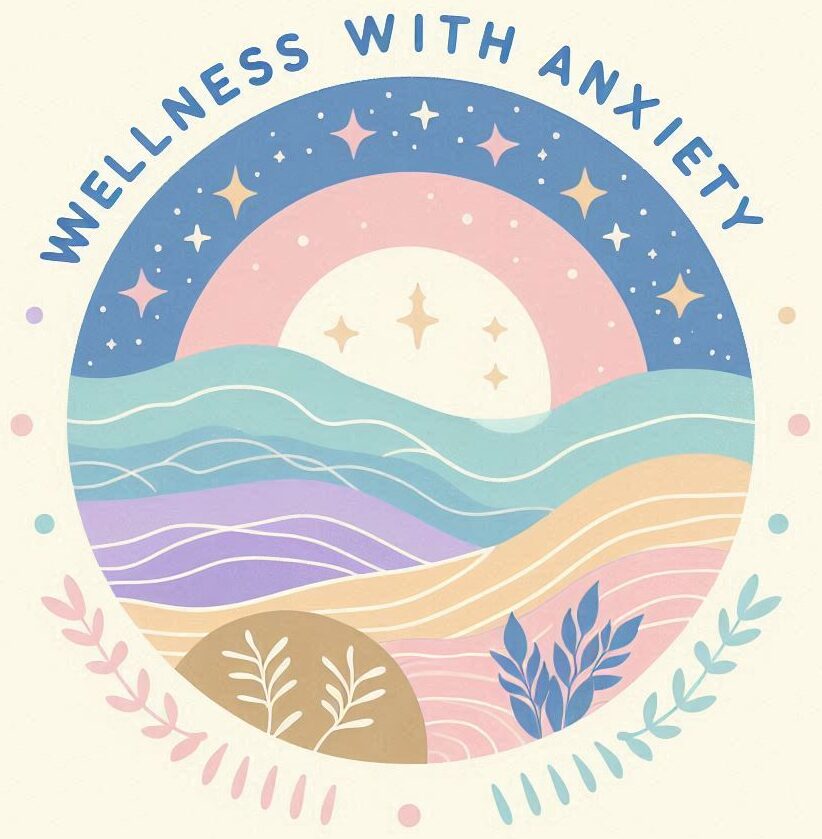 Anxiety isn’t just a fleeting moment of stress or worry; it’s a more deeply rooted experience that can touch anyone, from kids to grown-ups. But how often does it actually show up in children compared to adults? Well, it’s not just a guessing game. Recent stats tell a kind of eye-opening story: around 7% of children and adolescents deal with anxiety disorders, while adults aren’t far behind, with about 19% facing similar challenges. Clearly, anxiety has no age preference.
Anxiety isn’t just a fleeting moment of stress or worry; it’s a more deeply rooted experience that can touch anyone, from kids to grown-ups. But how often does it actually show up in children compared to adults? Well, it’s not just a guessing game. Recent stats tell a kind of eye-opening story: around 7% of children and adolescents deal with anxiety disorders, while adults aren’t far behind, with about 19% facing similar challenges. Clearly, anxiety has no age preference.
Now, you’d think that with the chaos and unpredictability of childhood, anxiety might win an award for popularity among kids, right? Turns out, research is still actively exploring this. While kids do experience quite a bit of anxiety, many professionals agree that adults tend to show higher overall prevalence rates. Adults juggle long-term stressors like work pressure, health issues, and family responsibilities, all of which can contribute to higher rates of anxiety.
Let’s not forget about the factors playing into this mix.
For kids, anxiety can often be stirred up like a storm. Think school pressures, family expectations, or even just the daily hustle at home. Stress balls in plain view for children include bullying, parental divorce, or even just the switch to a new school. For adults, it’s more about the broader strokes: career stresses, financial debts, caregiving pressures, and health concerns weigh heavily, shaping how anxiety worms its way into daily life.
Understanding the mechanics behind anxiety and how it affects both ends of the age spectrum is a game-changer.
Why?
Because it helps demystify those overwhelming feelings and can be the first step in seeking help. Knowledge here is more than just power; it’s a lifeline. Whether you’re a child tangled up in worries or an adult drowning in stress, recognizing the signs can lead to effective support and treatment.
In this world where age is just a number, but anxiety isn’t, being aware of how it creeps into everyday life for different age groups is crucial. It provides a map of sorts, guiding us through a clearer understanding and offering pathways to better support and management.
The Root Causes: What Triggers Anxiety in Children and Adults
 When it comes to anxiety, it’s all about figuring out where it stems from. For children and adults, these causes can overlap or differ wildly.
When it comes to anxiety, it’s all about figuring out where it stems from. For children and adults, these causes can overlap or differ wildly.
Genetics
Genetics play a part; some people are just more prone to anxiety because it runs in the family. Besides that, personal experiences, environments, and ongoing life challenges all contribute to stirring the anxiety pot.
Anxiety Triggers in Children & Adolescents
Kids often have their buttons pressed by things we might not even consider. A chaotic school environment, pressure to excel academically, or even just feeling out of place socially can add layers of stress. Anxiety tends to spike in unfamiliar situations or when facing towering expectations. Additionally, family issues like divorce or sibling rivalry can make things worse for a child’s mental health.
Anxiety Triggers in Adults
For adults, anxiety often gets tangled with the pace and demands of modern living. Financial worries, career instability, or the strain of caring for family members throw gasoline on the anxiety fire. Unresolved trauma or chronic stress from past experiences can linger and affect present-day mental health too. Recognizing these triggers is pivotal for devising effective coping strategies.
Anxiety vs. Modern Society
It’s crucial to grasp how modern society weighs heavily on both age groups. Children today face digital stressors, as online life intersects abruptly with offline realities. Cyberbullying and social media pressures are now components of growing up. Adults likewise find themselves in a constant hustle, trying to balance personal and professional lives.
Bringing these elements to light can transform understanding anxiety from a helpless feeling to something more manageable. It opens up avenues for tailored interventions, whether that’s therapy, lifestyle changes, or community support. Confronting the root causes and triggers means stepping towards control—one small but impactful step at a time.
Symptoms and Manifestations: Recognizing Anxiety in Diverse Age Groups
 Spotting anxiety isn’t always straightforward since symptoms can range widely depending on age.
Spotting anxiety isn’t always straightforward since symptoms can range widely depending on age.
Signs of Anxiety in Children & Teens
In children, anxiety might show up in ways that seem unrelated at first. We’re talking about nightmares, stomach aches, or even just withdrawing from playtime. Meanwhile, teenagers might hide their worries behind irritability or sudden defiance. Recognizing these symptoms is crucial because early intervention can make all the difference.
Anxiety in Adults
Adults, on the flip side, might experience anxiety as constant worry, insomnia, or tension that just won’t let up. Physical symptoms like headaches or an upset stomach are also good indicators. Adults tend to internalize stress, so it becomes a quiet but persistent part of daily life. This internalization can sometimes delay seeking help until symptoms are seriously affecting quality of life.
Cultural & Societal Norms
Cultural and societal norms also shape how anxiety makes its entrance and takes center stage. In some cultures, showing vulnerability isn’t encouraged, which means both kids and adults might hide their symptoms. This invisibility cloak can delay necessary support and treatment options.
How Anxiety Manifests in Different Developmental Stages
Developmental stages are pivotal in shaping how anxiety manifests. A toddler’s anxiety might revolve around separation, while an adolescent might stress over identity issues or friendship dramas. Meanwhile, adults face workplace competition or caregiving responsibilities, which can trigger anxiety at different points in life.
Navigating these varied symptoms isn’t about being a detective but about ensuring those experiencing anxiety feel understood, seen, and supported. Everyone’s experience with anxiety is personal and unique, and knowing what to look for can lead to timely and effective support that tailors treatment to individual needs.
Growth and Evolution: Can Kids Outgrow Anxiety?
 Children grappling with anxiety often leave parents wondering if their kids will outgrow these feelings. The reality is a mixed bag. While some children might see their symptoms lessen with age, others may carry anxiety into adulthood. It really depends on both the individuals and how early they’re supported.
Children grappling with anxiety often leave parents wondering if their kids will outgrow these feelings. The reality is a mixed bag. While some children might see their symptoms lessen with age, others may carry anxiety into adulthood. It really depends on both the individuals and how early they’re supported.
Early Support
Crucially, early support can be a game-changer. Interventions, like cognitive behavioral therapy, can help young ones build coping skills that last a lifetime. These strategies can transform anxiety from a debilitating presence into something much more manageable and less daunting.
Understanding the Myth of Outgrowing Anxiety
The myth that kids just magically outgrow anxiety without intervention isn’t doing anyone any favors. Anxiety often doesn’t just vanish with age. Instead, it requires active management and, quite often, professional guidance. Recognizing and addressing anxiety early on can significantly improve overall well-being and development.
How Coping Mechanisms Become Lifelong Tools
As kids develop into adults, the strategies they’ve learned can evolve, too. Childhood coping mechanisms, when nurtured, become lifelong tools. While an anxious child might need more hands-on support initially, by adulthood, these tools can become second nature.
Addressing anxiety early isn’t just about reducing symptoms. It’s about giving kids the resources they need to handle life’s ups and downs effectively. Helping them adapt and develop their own toolkit for managing anxiety can make a lasting difference.
Integrated Approaches: Managing and Treating Anxiety Across Lifespans
 When it comes to managing anxiety, a one-size-fits-all approach just doesn’t cut it. Both children and adults benefit from a blend of strategies tailored to their unique needs and situations.
When it comes to managing anxiety, a one-size-fits-all approach just doesn’t cut it. Both children and adults benefit from a blend of strategies tailored to their unique needs and situations.
Managing Anxiety in Children & Teens
For children, managing anxiety often starts with creating a supportive environment both at home and school. Teachers and parents can form a team, identifying triggers and working together to minimize them. Early access to therapy, such as cognitive-behavioral therapy, equips kids with tools to manage anxiety effectively.
Managing Anxiety in Adults
Adults facing anxiety might benefit from a mix of therapeutic approaches, medication, and lifestyle changes. Mindfulness practices, regular physical activity, and establishing a routine can complement therapy. Medication, when managed by a healthcare professional, can also provide necessary relief for some.
Prevention
Prevention is equally important. Recognizing stressors and addressing them before they escalate helps in managing anxiety across ages. Children may find relief in structured activities and stable routines, while adults might focus on balancing work and personal responsibilities.
The Impact of Family & Community
Family and community play a significant role in overcoming anxiety. Open communication, understanding, and support from family members can make all the difference. Community resources, such as support groups and educational workshops, provide additional avenues for assistance.
Ultimately, tackling anxiety involves a comprehensive approach that acknowledges the complexities unique to each age group. By embracing these strategies, both kids and adults can lead healthier, more fulfilling lives despite anxiety’s challenges.
